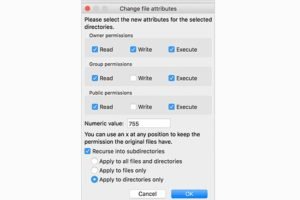

Like all PowerShell cmdlets, objects generated by Get-Acl can be easily processed by other PowerShell cmdlets, or the output can be formatted so that it can be passed to other applications. And while it is a comprehensive tool with lots of options, PowerShell provides more flexibility on how results are formatted. On top of that, the solution delivers security intelligence rich in details about changes, access and configurations, so you can identify abnormal behavior, investigate threats and minimize the risk of privilege abuse.ICacls is a built-in command line tool for reporting NTFS access permissions in Windows. It provides easy-to- read reports on explicit and inherited permissions for Active Directory objects, including domains, user groups, organizational units and more.

But if you prefer not to spend all your time writing scripts and sifting through cryptic data, try Netwrix Auditor for Active Directory. To keep an eye on permissions on an Active Directory group or OU, you can use native tools, such as PowerShell.

Having this information will enable you to enforce the least-privilege model and minimize the risk of privilege abuse. By reviewing a comprehensive Active Directory permissions report, you can determine who has access to what in the domain, see how user permissions were delegated (permissions were given directly or via group membership), and analyze whether each user’s access rights align with their responsibilities or no longer needed. Strictly enforcing the least-privilege principle is essential for strong security. Open the file produced by the script in MS Excel.$report | Export-Csv -Path "C:\data\OU_Permissions.csv" -NoTypeInformation # Export report out to a CSV file for analysis in Excel. Get-ADObject -SearchBase (Get-ADRootDSE).schemaNamingContext -LDAPFilter '(schemaIDGUID=*)' -PropertiesįorEach-Object, ` $ErrorActionPreference = 'Silentl圜ontinue' Open the Powershell ISE → Create new script with the following code, specify Username and path for the export and run it:.How to Get an Active Directory OU Permissions Report.


 0 kommentar(er)
0 kommentar(er)
